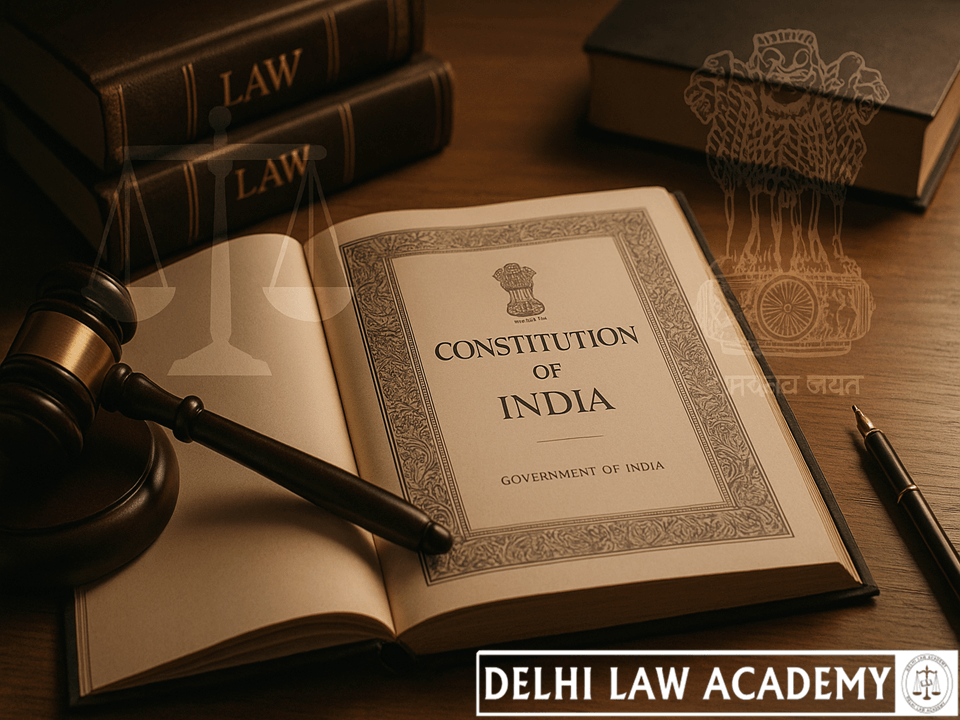
⚖️ Supreme Court Advocates-on-Record Association v. Union of India (NJAC Judgment)
Articles 124A | Constitution (99th Amendment) Act, 2014
- The Constitution (Ninety-ninth Amendment) Act, 2014 is declared unconstitutional and void.
- The National Judicial Appointments Commission Act, 2014, is declared unconstitutional and void.
Delhi Law Academy Jaipur presents below for aspirants of RJS, DJS, PCS (J) and other Judicial Services throughout India a summarized version of the Supreme Court judgment in the case of Supreme Court Advocates-on-Record -Association v. Union of India striking down the Constitution (99th Amendment) Act, 2014.
📜 JUDGMENT DETAILS
- Date of Judgment: 16 October 2015
- Bench Strength: 5
- No. of pages: 1042
🏛️ Judgment (Extract)
The “basic structure” of the Constitution, presently inter alia includes the supremacy of the Constitution, the republican and democratic form of Government, the “federal character” of distribution of powers, secularism, “separation of powers” between the legislature, the executive, and the judiciary, and “independence of the judiciary”. This Court, while carving out each of the above “basic features”, placed reliance on one or more Articles of the Constitution, sometimes in conjunction with the preamble.
The deduction of the concept of “independence of the judiciary” emerged from a collective reading of Articles 12, 36 and 50. It is sometimes not possible, to deduce the concerned “basic structure” from a plain reading of the provisions of the Constitution. And at times, such a deduction is made, from the all-important silences hidden within those Articles. Therefore, when a plea is advanced raising a challenge on the basis of the violation of the “basic structure” with reference to the “independence of the judiciary”, its rightful understanding is, and has to be, that Articles 12, 36 and 50 on the one hand, and Articles 124, 217 and 222 on the other, (read collectively and harmoniously) constitute the basis thereof.
✅ CONCLUSIONS (As Stated in Judgment)
Article 124A constitutes the edifice of the Constitution (99th Amendment) Act, 2014. The striking down of Article 124A would automatically lead to the undoing of the amendments made to Articles 124, 124B, 124C, 127, 128, 217, 222, 224, 224A and 231.
Article 124A (1) provides for the constitution and the composition of the National Judicial Appointments Commission (NJAC). It is composed of the following:
- the Chief Justice of India, Chairperson, ex officio;
- two other senior Judges of Supreme Court, next to the Chief Justice of India – Members, ex officio;
- the Union Minister in charge of Law and Justice – Member, ex officio;
- two eminent persons, to be nominated – Members.
…(all remaining paragraphs preserved exactly as given)…
🧾 ORDER OF THE COURT
- The prayer for reference to a larger Bench and for reconsideration of the Second and Third Judges cases is rejected.
- The Constitution (Ninety-ninth Amendment) Act, 2014 is declared unconstitutional and void.
- The National Judicial Appointments Commission Act, 2014, is declared unconstitutional and void.
- The system of appointment of Judges to the Supreme Court, and Chief Justices and Judges to the High Courts; and transfer of Chief Justices and Judges of High Courts from one High Court, to another, as existing prior to the Constitution (99th Amendment) Act, 2014 (called the “collegium system”), is declared to be operative.
- To consider introduction of appropriate measures, if any, for an improved working of the “collegium system”, list on 3.11.2015.
📚 Background
(Full original text retained exactly as provided.)
📘 Stay Ahead with Delhi Law Academy!
Get access to free monthly current affairs, read our insightful blogs,
and explore free study resources prepared by experts at DLA Jaipur. 🚀
Frequently Asked Questions (FAQs)
Since Article 124A was the foundation of the NJAC system, striking it down automatically nullified all related amendments.
Contact us
📍 Delhi Law Academy – Jaipur Branch
6C, Tower 2, Coaching Hub, Pratap Nagar, Jaipur – 302033
📞 Phone:
+91 9911916552
+91 8447285606
✉️ Email:
contactus@delhilawacademy.com

